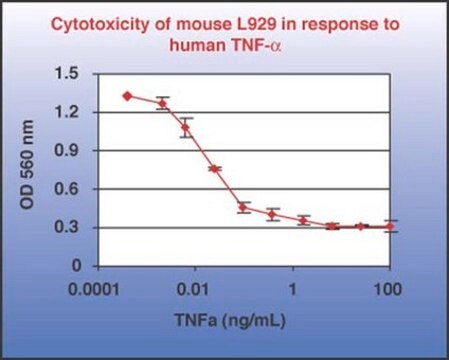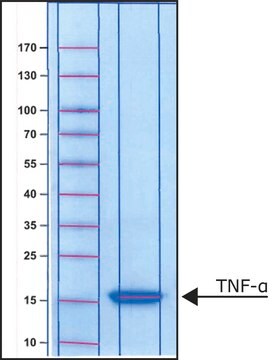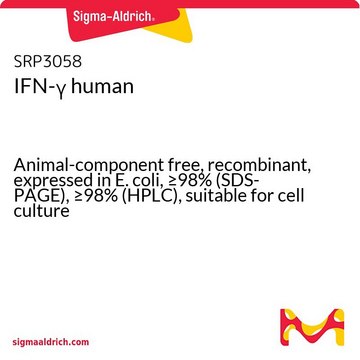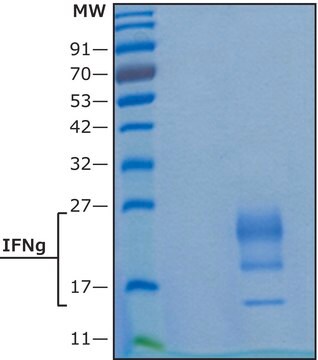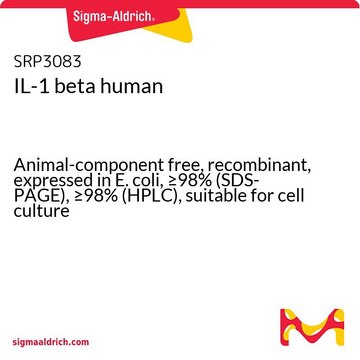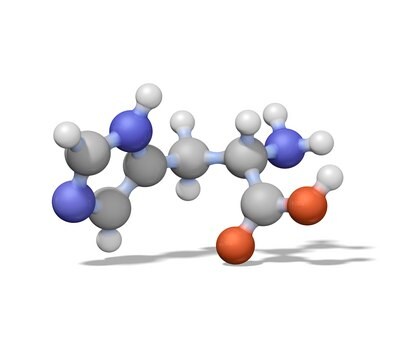T0157
Tumor Necrosis Factor-α human
TNF-α, recombinant, expressed in yeast, buffered aqueous solution, suitable for cell culture
Sinónimos:
hTNF-α, TNF-α
About This Item
Productos recomendados
origen biológico
human
recombinante
expressed in yeast
Ensayo
≥95% (SDS-PAGE)
Formulario
buffered aqueous solution
potencia
>1x108 units/mg ED50
calidad
endotoxin tested
actividad específica
≥2 × 107 U/mg
mol peso
~17.4 kDa
envase
pkg of 10 μg
condiciones de almacenamiento
avoid repeated freeze/thaw cycles
concentración
0.1-10 mg/mL
técnicas
cell culture | mammalian: suitable
impurezas
<10 EU/mLtested (LAL test)
color
colorless
Nº de acceso UniProt
Condiciones de envío
dry ice
temp. de almacenamiento
−20°C
Información sobre el gen
human ... TNF(7124)
¿Está buscando productos similares? Visita Guía de comparación de productos
Descripción general
Aplicación
Acciones bioquímicas o fisiológicas
Forma física
Nota de análisis
Código de clase de almacenamiento
12 - Non Combustible Liquids
Clase de riesgo para el agua (WGK)
WGK 3
Punto de inflamabilidad (°F)
Not applicable
Punto de inflamabilidad (°C)
Not applicable
Equipo de protección personal
Eyeshields, Gloves, multi-purpose combination respirator cartridge (US)
Elija entre una de las versiones más recientes:
¿Ya tiene este producto?
Encuentre la documentación para los productos que ha comprado recientemente en la Biblioteca de documentos.
Los clientes también vieron
Nuestro equipo de científicos tiene experiencia en todas las áreas de investigación: Ciencias de la vida, Ciencia de los materiales, Síntesis química, Cromatografía, Analítica y muchas otras.
Póngase en contacto con el Servicio técnico

